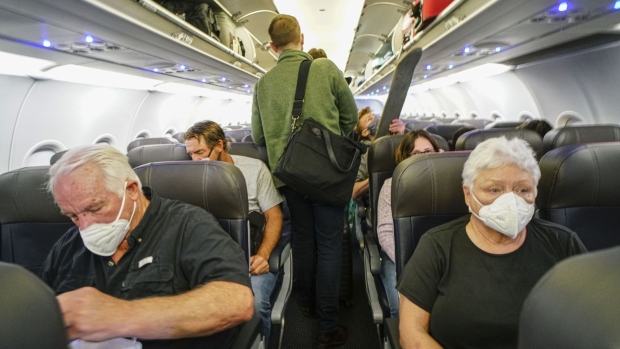May 22, 2020
America Has Opted for a Bad Recession
, Bloomberg News

(Bloomberg Opinion) -- People keep saying that the coronavirus crisis has presented America with a difficult choice: the lives of our parents and grandparents versus the economic well-being of our children. I beg to differ. The real choice is, and has always been, between a sane national strategy for containing the pandemic and economic disaster.
I don’t like getting sick. If you have a bad cold, I’d rather not shake your hand. Similarly, I’ll do a lot to avoid getting Covid-19, even if I’m pretty sure it won’t kill me. As a 45-to-64-year-old, my odds of being hospitalized if infected look to be about 1 in 25.(1) No thanks! I’ll pass on getting on a plane or going to a crowded restaurant.
I’m not the only one. Millions of Americans are engaging in self-imposed austerity to stay on the safe side. As Federal Reserve Chairman Jerome Powell put it on Sunday, “for the economy to fully recover, people will have to be fully confident.” This is the challenge policymakers face: how to give people the level of security needed to support a real recovery.
One option, which Powell emphasized, is to develop a vaccine for SARS-Cov-2, the virus that causes Covid-19. But this takes time. No vaccine for any disease has ever been rolled out in less than four years. It might never happen: SARS-Cov-2 is one of seven known human coronaviruses, none of which has a vaccine.
The other option is herd immunity, in which so many people get the virus and develop antibodies that there aren’t many people left to infect. But, for you fans of Sweden out there, it’s not clear that infection confers immunity. Four of the known human coronaviruses can re-infect people relatively quickly. Scientists don’t know about the rest.
This leaves policymakers with two paths. The first, and best, is to devise an effective and comprehensive national testing, tracing and quarantining program, which would enable us all to feel a lot more confident that we’re not going to run into people with Covid-19.. So far, though, the U.S. remains wedded to its local vision of public health governance, in which states largely do their own thing. The result will be a patchwork approach to contact tracing. Connections that cross state or even county lines will likely be missed, allowing recurring outbreaks to undermine consumers’ confidence.
The second path: Let the economy evolve organically to provide the assurance that people demand. This would entail a vast transformation, as both workers and consumers demand considerably more space to ensure their safety. The process would probably be very slow, involving persistent unemployment and sluggish growth. Consider, for example, how long the U.S. economy struggled to adjust to high-priced oil in the 1970s.
On the merits, the decision would seem a no-brainer: a vigorous national public health response versus a horrific recession. I hope for the former. Sadly, given the evidence so far, I expect the latter.
(1) See: https://www1.nyc.gov/site/doh/covid/covid-19-data.page, which shows that 836.12 out of 100000 people in New York City aged 45-64 were hospitalized. The state reported that about a fifth of all New Yorkers have had the disease: https://www.governor.ny.gov/news/amid-ongoing-covid-19-pandemic-governor-cuomo-announces-results-states-antibody-testing-survey. Hence, over 4% of those aged 45-64 who got the disease were hospitalized.
This column does not necessarily reflect the opinion of the editorial board or Bloomberg LP and its owners.
Narayana Kocherlakota is a Bloomberg Opinion columnist. He is a professor of economics at the University of Rochester and was president of the Federal Reserve Bank of Minneapolis from 2009 to 2015.
©2020 Bloomberg L.P.